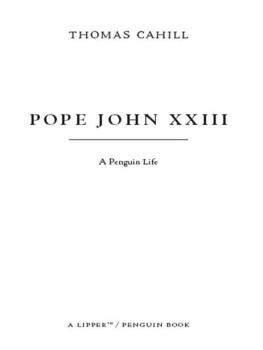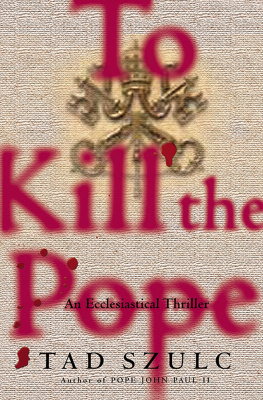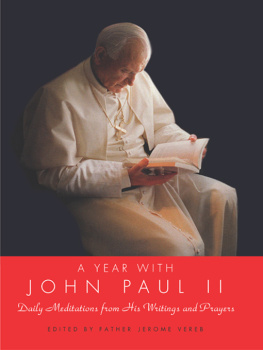
To all women and men of good will, in the spirit and memory of the Good Pope
Contents

P REFACE
The Making of a Saint and the Remaking of a Church
T hey called him Il Buono Papa, the Good Pope. During Pope John XXIIIs lifetimeand especially in the immediate aftermath of his death from stomach cancer on June 3, 1963Italian Catholics and Socialists alike; journalists and diplomats; Roman Catholics, Protestants, non-Christians, and nonbelievers across the globe; men and women of every race, class, and nation called him good and mourned his passing. His doughy peasants face, his dark eyes, ample jowls, beaked nose, and big-lobed ears were known throughout the world. He was a megawatt celebrity in the age of such secular saints as Elizabeth Taylor and Richard Burton, John Fitzgerald Kennedy and Jackie Kennedy, Fidel Castro and Nikita Khrushchev. But there was nothing glamorous about Angelo Giuseppe Roncalli. Even in his papal vestments he carried himself like the son of Italian farmers, themselves the sons and grandsons of countless generations of farmers.
For those who admired him during his lifetime for his teachings on peace and his commitment to open his ancient Church to the modern worldto allow air and light in and let the profound message of the gospel shine outhe stood as a unique character radiating an aura of humility, humor, and sanctity. His genius lay in the willingness to introduce the concept of aggiornamento, or updating, so that his beloved Church might benefit from an infusion of fresh air through newly opened windows.
Now, a half-century after his death, he is almost certain to be canonized, officially recognized by his Church, as a saint. In 2000, one of his successors, Pope John Paul II, named him Blessed in the penultimate step to sainthood, ensuring that this remarkable figure would be rememberedand reveredby the generations.
But why, beyond his popularity and unusual charismahis spiritual celebrity, if you willshould he be singled out for such honor and glory, which he would undoubtedly eschew, perhaps angrily if he were here among us to speak for himself?
Some figures in Christianity and the history of the Catholic Church stand out in bold relief for their holiness in life, their bold or unusual personalities, and the imprint they left behind as servants of the faith: Thomas Aquinas, Edith Stein, Pope Gregory the Great, Mother Teresa of Calcutta are models of sanctity and service who have been canonized by the Catholic Church. Many such saints left behind writings meant to instruct and inspire othersthink of Augustine of Hippo and Thrse of Liseux as two more examples. All exhibited faith, hope, and charity in their daily living. Perhaps not all day, every day, for saints are imperfect human beings, hardly angels or gods. Saints and sainthood are not necessarily to be considered rarities; rather every Christian is called to this state of sanctity. Holiness is within ones grasp at any hour of the day and all around us, for each of us, whether we choose to acknowledge and tap into it or not.
Still, how could such a man as Roncalli, known to the world as John XXIII, and who in many ways was a throwback to previous centuries, shine so brightly in the modern world? After all, he had come of age and labored mightily in a Roman Catholic Church that appeared to many to be tired, stale, and defensive in its stance against perceived enemies. How did this pious peasant priest engage the protean, secular, fast-moving contemporary world so distinctly and effectively? And how was he able to instill his Church with a newfound confidence to become the shepherd for the whole world and dramatically open the doors of the Church to meaningful, necessary, and faithful change?
This biography is my attempt to answer these questions. And I feel some urgency in finding these answers, since it could be argued that many of the crises and tensions within the Catholic Church today result from later leaders moving away from what John modeled and accomplished. The fault lines that exist in the contemporary Church are different but similar to previous divides that have scored the institution in centuries pastincluding scandals and theological debatesbut there is no singular figure or movement on the scene today to compare to Roncalli.
The eternal question that has concerned the Church since the first Pentecost in Jerusalem is, Can the institution founded in the apostolic age survive another generation in the face of worldly forces of opposition and human failures and corruption within its own ranks?
Another way to ask these questions is to ask their opposite: What would have happened if an ultratraditionalist or a less pastoral-minded cardinal had been elected as pope? The answer seems obvious: the entire liberalizing movement of the 1960s and the Churchs response to it might have wrenched Catholics too much in one direction or another and not presented as open a face to a rapidly changing world. As it turns out, that face conveyed both a bedrock, conventional religious piety as well as a remarkable and hitherto unfamiliar tolerance for theological and political currents that could perhaps have broken a more rigid, pharaoh-like leader. John, stout as he was, sat lightly upon the throne, beneath the cumbersome triple tiaramore so than perhaps any of his predecessors in historyat exactly the moment when such an attitude would be critical for the very survival and creative adaptation of the Catholic idea in a brave new world of burgeoning technology, mass communication, and deadly competition among cultures virtually everywhere on Earth.
It is fair to say that the Church and the world would have been much different if John had not been elected in 1958. Arguably, he slowed the escalation of the nuclear arms race, at least temporarily, at a crucial juncture in the Cold War through his calming presence during the Cuban missile crisis, his teaching in the encyclical Pacem in terris (Peace on Earth), and his deft, personal touch in diplomacy, perfected over a quarter century through some of the thorniest assignments imaginable for an apostolic nuncio in Europe in the decades leading up to and during World War II.
Setting the tone for his successors, he moved the Church in a new direction in its relationship to Jews, which bore fruit in the Vatican Councils declaration Nostra aetate (In Our Age), and to non-Catholic Christians that ultimately resulted in the decree on ecumenism Unitatis redintegratio (The Restoration of Unity) and a whole new attitude on the part of clergy, the hierarchy, and the laity.
This pope still matters because he stood with his feet planted firmly in the swiftly flowing river of history and, like the legendary Saint Christopher, helped his people move safely from one bank to the other without being swept away by the raging currents beneath. Thus he saved the Church he loved so much, preserving its core doctrines intact, through force of will and personal diplomacy as manifested in a humble, indeed earthy spirituality that contradicted most expectations by his peers (he would call them, not without irony, his betters in the Church hierarchy).
He was thus able to move the immovable and open up possibilities for reformor even a discussion of reformthat his immediate predecessors and contemporaries would not even consider. Perhaps only Pius X (though no liberal he, and the last pope to date to be canonized) could match John for his reforming pastoral zeal.
Furthermore, John did not allow the pomp of papal ceremony or the inertia of a legendary millennia-old bureaucracy to divert him from his agenda. He knew he had but a limited time to accomplish his ambitious program, symbolized and given substance by the Second Ecumenical Council of the Vatican. Indeed, when he was advised, early in the planning phase in 1960, that it was unlikely the council could be convened before 1964, he promptly decreed that it would open in 1962. It did.
Next page
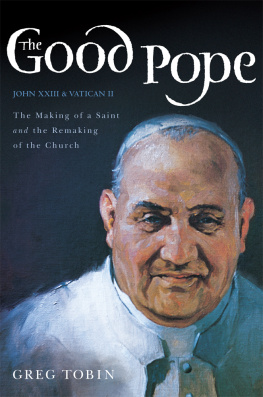
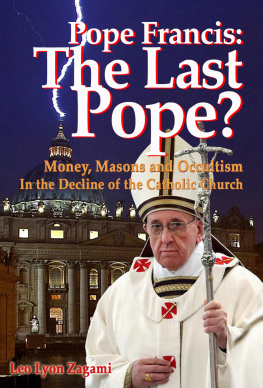

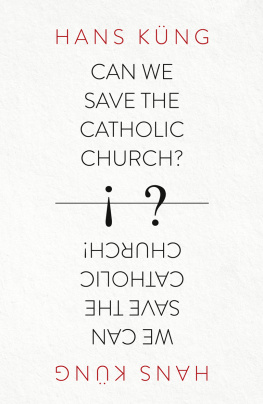
![Pope John XXIII - The Roman Missal [1962]](/uploads/posts/book/272720/thumbs/pope-john-xxiii-the-roman-missal-1962.jpg)

